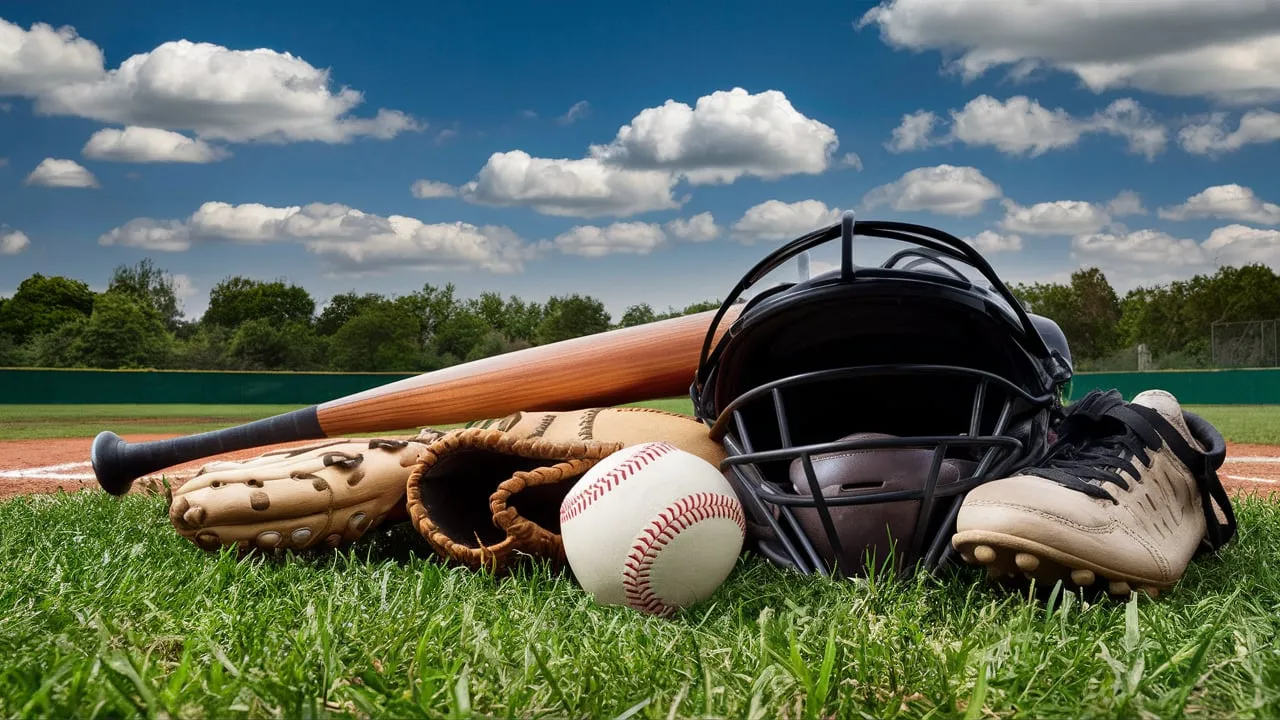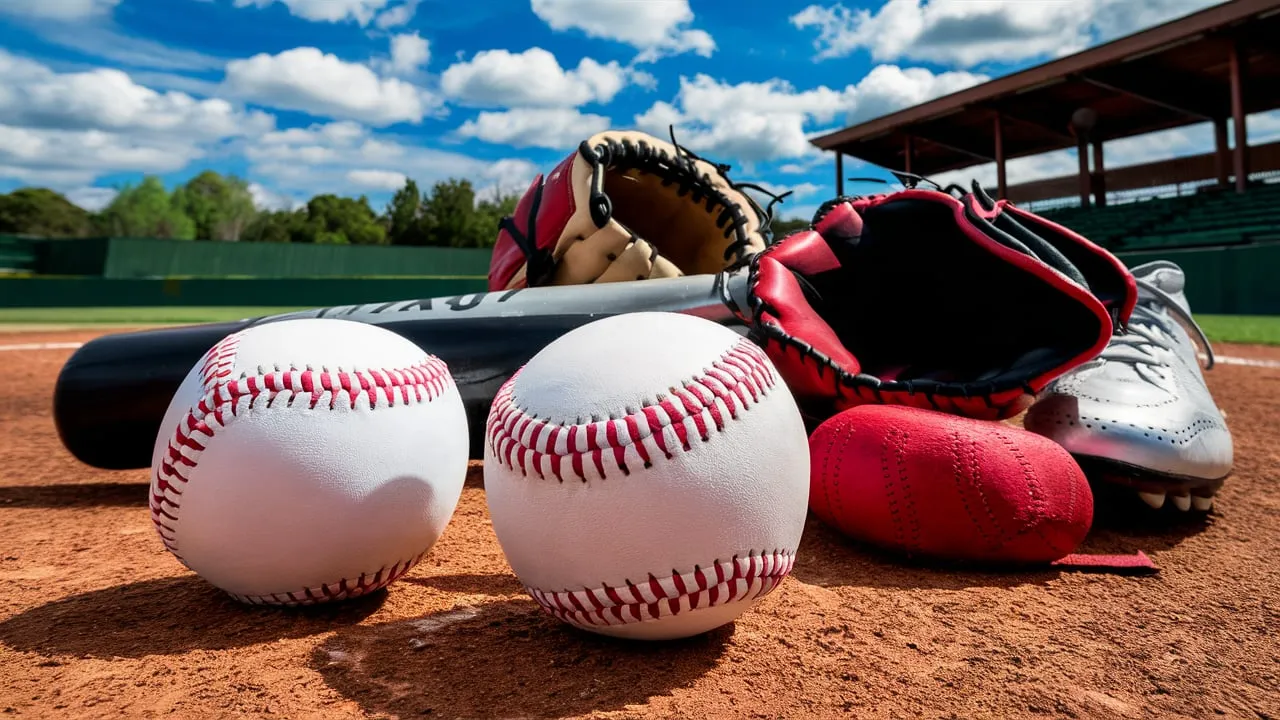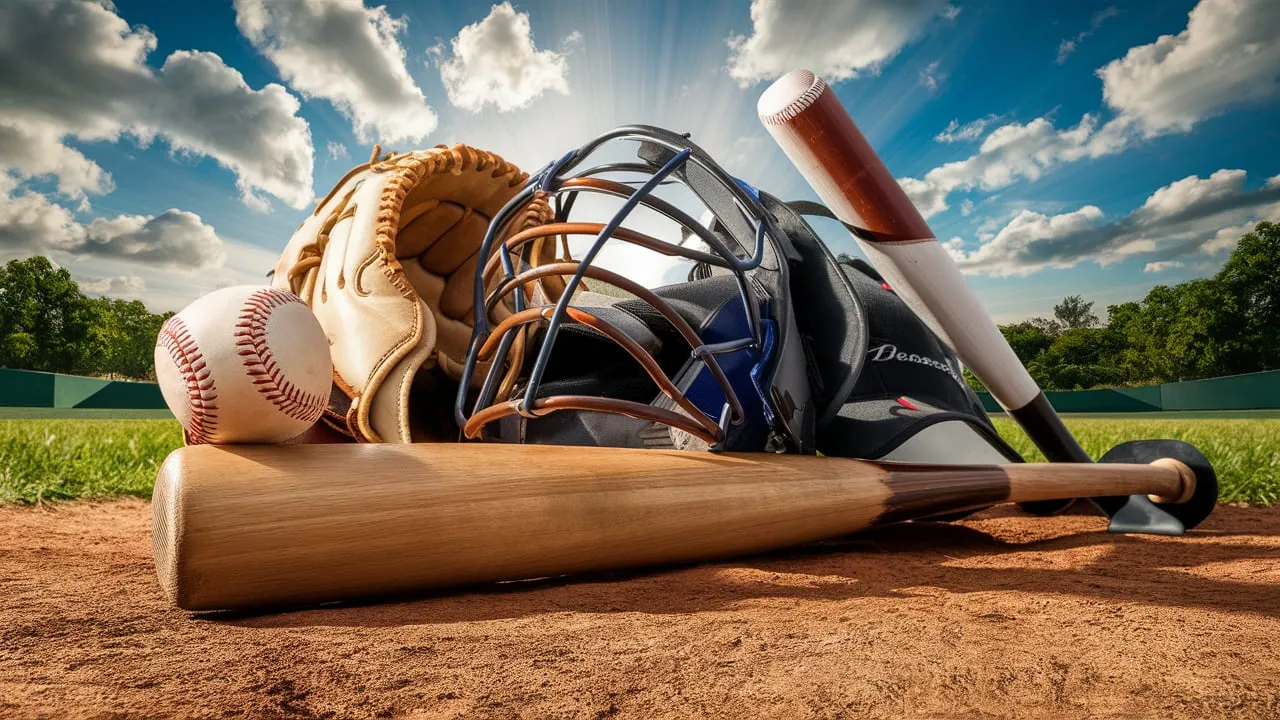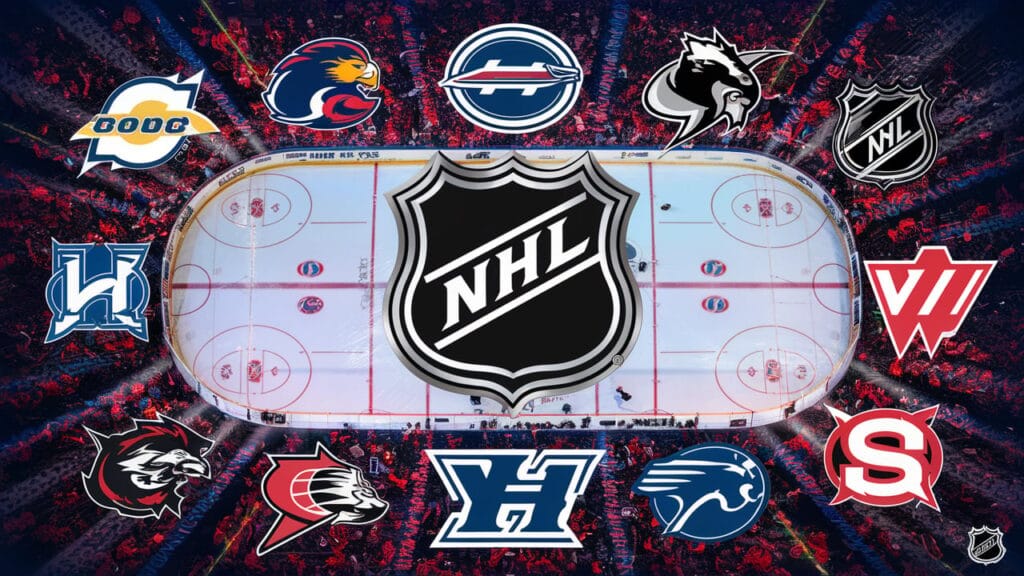Introduction: Why Baseball Equipment Matters
Baseball is one of the most beloved sports worldwide, with an estimated 15 million players in the United States alone as of 2023. Whether you’re a little league rookie or a seasoned professional, the importance of using the right baseball equipment cannot be overstated. The right gear not only enhances your performance but also ensures your safety, comfort, and overall enjoyment of the game.
From the bat you swing to the glove you catch with, every piece of Essential Baseball Equipment serves a specific purpose. Your success on the field can be greatly impacted by your choice of equipment. In this comprehensive guide, we’ll break down the essential baseball equipment every player needs, along with tips on choosing the best gear based on your position, level of play, and personal preferences.
Whether you’re a parent shopping for your child’s first set of Essential Baseball Equipment or an experienced player looking to upgrade, this article will provide actionable insights to help you make informed decisions. By the end of this guide, you’ll be equipped with the knowledge to select the right gear that suits your needs, playing style, and budget.

Baseball Gloves: The Foundation of Defense
A high-quality baseball glove is one of the most essential pieces of equipment for any player. Whether you’re an outfielder, infielder, pitcher, or catcher, your glove is crucial for fielding balls and making successful catches.
Types of Baseball Gloves:
- Outfielder’s Gloves: These gloves typically have a deeper pocket and a longer length (12 to 13 inches) to help players catch fly balls and cover more ground.
- Infielder’s Gloves: These gloves are smaller (11 to 11.75 inches) and more flexible to allow for quick transitions and fast plays at second base, shortstop, and third base.
- Pitcher’s Gloves: These gloves are often designed with a closed web to hide the ball from the batter, and they usually range in size from 11.5 to 12 inches.
- Catcher’s Mitts: Catcher’s mitts are uniquely designed with additional padding to absorb the impact of high-speed pitches. They are typically 32.5 to 34 inches in circumference.
Choosing the Right Baseball Glove:
- Fit: Ensure the glove fits comfortably on your hand without being too tight or too loose. Gloves should be snug but flexible to allow for ease of movement.
- Material: Typically, leather or synthetic materials are used to make gloves. Leather gloves tend to be more durable and provide a better fit after break-in, while synthetic gloves are lightweight and easier to maintain.
- Brand and Budget: Popular glove brands like Rawlings, Wilson, and Mizuno offer a range of options, with prices varying from $50 to over $300, depending on the quality and craftsmanship.
Statistics: According to a 2022 survey, approximately 70% of professional baseball players prefer using premium leather gloves for better durability and performance.
Baseball Bats: Selecting the Right Bat for Power and Performance
The bat you use plays a significant role in your hitting performance. Whether you’re swinging for power or trying to get on base with a more controlled hit, choosing the right bat is essential.
Types of Baseball Bats:
- Wooden Bats: Preferred in professional leagues (MLB), wooden bats offer a traditional feel and are required in most professional and college games. Usually, birch, ash, or maple are used to make them.
- Aluminum Bats: Most commonly used in youth leagues and high school games, aluminum bats offer a larger sweet spot and greater durability. They also tend to be lighter than wood, making them easier to swing.
- Composite Bats: These bats are made from a mix of materials like carbon fiber, offering a balanced feel and enhanced performance. They’re known for having a large sweet spot and greater power potential.
Key Considerations for Choosing a Bat:
- Length and Weight: The most important factor when selecting a bat is ensuring it’s the right size for your body and style. A good rule of thumb is to choose a bat that reaches from the ground to your waist when stood up next to you.
- Drop Weight: This refers to the difference between the bat’s length and weight (e.g., a 32-inch bat with a 30-ounce weight has a drop weight of -2). Players typically use a -3 drop weight in high school and college, while youth leagues may allow a -10 or lighter drop weight for easier handling.
- Material: Each material has its pros and cons. Wooden bats offer a traditional, authentic feel but are less forgiving. Aluminum and composite bats, on the other hand, provide greater durability and power but are usually more expensive.
Statistics: The market for baseball bats is expected to grow by 5.3% annually, with aluminum and composite models accounting for 60% of sales due to their widespread use in youth and high school leagues.
Protective Gear: Safety First

In baseball, injuries are an unfortunate part of the game. That’s why protective gear is non-negotiable. This includes items like helmets, chest protectors, elbow guards, and shin guards.
Essential Protective Gear:
- Batting Helmet: All players, from youth leagues to professional baseball, are required to wear a helmet while batting. Helmets with faceguards or additional protection for the jaw and chin are common for extra safety.
- Catcher’s Gear: Catchers face the most intense physical challenges, including fast pitches and foul balls. Key pieces of equipment include a helmet with a cage or faceguard, throat guard, chest protector, shin guards, and a cup.
- Elbow Guards and Shin Guards: Players in certain positions, especially catchers and batters, often use elbow guards and shin guards for added protection from fast-moving balls.
Why Protective Gear is Crucial:
- Impact Protection: Protective gear helps absorb the impact from fast balls and prevents fractures, contusions, or more serious injuries.
- Prevention of Head Injuries: Batting helmets are crucial in protecting players from concussions, with studies showing that helmets reduce the risk of head injuries by over 50%.
Baseball Cleats: Traction and Comfort for Every Play
Having the right pair of Essential Baseball Equipment cleats is essential for maintaining traction on the field and enhancing your overall comfort. Baseball cleats come in different designs, depending on the surface and playing conditions.
Types of Baseball Cleats:
- Metal Cleats: These cleats are generally preferred for hard, grass fields and provide superior traction. They are ideal for competitive players at the high school, college, and professional levels.
- Plastic Cleats: Lighter and more comfortable than metal cleats, plastic cleats are commonly worn by younger players and those participating in recreational leagues.
- Molded Cleats: Molded cleats are integrated into the sole of the shoe, offering durability and comfort without the need for screws or adjustments. They are popular for players who participate in multiple sports.
Key Considerations for Choosing Cleats:
- Field Type: Metal cleats work best on grass or turf fields, while molded cleats are more versatile and suited for all types of fields, including synthetic turf.
- Fit and Comfort: Cleats should fit snugly but not be too tight. Look for a design with adequate ankle support to prevent injuries, especially for pitchers and catchers.
Market Insight: The global baseball footwear market was valued at $2.5 billion in 2023 and is expected to grow at a CAGR of 3.8%, with cleats being the primary segment.
Baseball Bags: Carrying Your Gear with Ease

To keep all your baseball equipment organized and easy to transport, investing in a quality baseball bag is a wise decision. These bags come in a variety of sizes and styles, including backpacks, duffle bags, and wheeled bags.
Types of Baseball Bags:
- Backpacks: These compact and lightweight bags are ideal for players who only need to carry the essentials, such as a bat, glove, and helmet.
- Wheeled Bags: Larger bags with wheels are perfect for players with a lot of equipment, as they provide easy transport without straining the back or shoulders.
- Duffle Bags: These versatile bags offer a large capacity and are perfect for players who need to carry multiple sets of gear.
Why You Need a Baseball Bag:
- Organization: A dedicated bag helps keep your gear organized and easily accessible.
- Protection: Baseball bags also protect your expensive equipment from wear and tear, especially during travel or transportation.
People Also Ask
What equipment do I need to start playing baseball?
To start playing baseball, you’ll need a glove, bat, baseballs, cleats, and a helmet. Depending on your position, additional gear such as a catcher’s mitt or chest protector may be necessary.
What is the best type of baseball bat for beginners?
For beginners, a lightweight, alloy or composite bat with a larger sweet spot is ideal. These bats are forgiving on mishits and help build confidence. A bat with a drop weight of -10 to -13 is typically recommended for youth players.
How do I choose the right size baseball glove?
The right size baseball glove depends on your position. Infield gloves are typically between 11 and 11.75 inches, while outfield gloves are larger, ranging from 12 to 13 inches. Make sure the glove fits comfortably on your hand and allows for flexibility.
Are metal or plastic cleats better for baseball?
Metal cleats provide better traction on grass or dirt fields, ideal for competitive play. Plastic cleats are more versatile, lightweight, and suitable for most recreational leagues and synthetic turf.
Conclusion: Choosing the Right Baseball Equipment
Selecting the right Essential Baseball Equipment for every player, from those just starting to those playing in the major leagues. By investing in quality gear that fits well and is designed for your specific needs, you can enhance both your performance and safety on the field. Remember, the best equipment for you depends on your playing position, experience level, and personal preferences.
While quality is crucial, it’s also important to consider your budget. From affordable youth league gear to professional-level equipment, there’s something for every player at every price point. Take the time to research your options, consult with experts, and make informed choices to ensure you’re properly equipped for success.




